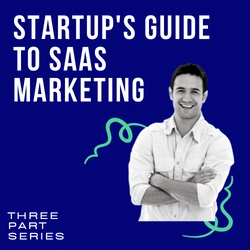Stop Offering Discounts in Your Coaching Business While Still Landing A Happy Client Because You're Worth More Than That
What’s my goal today? To convince you to never lower your pricing again.
Here’s another common situation most coaches have experienced at some point.
You explain your package and pricing, maybe mention a contract and your potential client responds with the dreaded (and at times soul crushing), “I would love that, but I can’t afford it right now.”
And most of us grab onto that “right now” – for some of us, that’s all we hear. We want to help the person. We want to make some money with this client, even if it’s not as much. So, more often than that, we lower our rate. It’s easy to do, after all, the client will probably refer business to me later.
Maybe, but most likely not. And even if you do get a referral or two, rest assured they’ll expect the same discount.
The one thing you can count on is that you’ll end up with a client who takes up too much of your valuable time, and all for less than your other clients are paying. Hopefully, your other clients don’t find out – that’s not fair to them.

Never Offer A Discount or Lower Your Rates Again – Ever – For Any Reason
If you know who Tabatha Coffey is, then you’ll know where I’m going with this. Tabatha is a renowned hair stylist and TV personality – a true expert and in the past, she’s helped salons and other struggling businesses bounce back and find prosperity. Any guess what Ms. Coffey’s #1 rule in business is? Don’t give discounts because it tells the customer that your service is less valuable and your time can be discounted.
The lady speaks the truth.
From this sentence and for the rest of your career, make a promise to yourself that you will never again lower your rates to attract a client. You will never again devalue your time and expertise because from this moment on you will always remember what you’re worth.
There’s A Better, Wiser Way to Lower Your Pricing
Of course, I’m not suggesting giving up all flexibility of pricing. This is your livelihood, after all. I’m merely recommending that when you provide a “discount” you do it differently, so it’s not a discount at all.
For example, if your coaching package includes the following:
- 1-hour call per month
- 1 45-minute check-in and status update call halfway through the month
- 1 email per day
- 1 in-person meeting per quarter
- 1 mastermind retreat annually
You charge $1,200 for that package monthly. A fair price for your expertise and time. But your potential client can’t afford the package. Instead of reducing the price of the package for the client, you’re going to reduce the price along with the overall value. Client pays less and gets less, so it costs you less.
Instead of getting everything that’s always included, this client will pay $900 a month and will receive all but the 45-minute monthly check-in call and the mastermind retreat.
In this way there is no discount. You’re simply creating a custom package that fits the financial capability of the client by reducing the price and value.
Make this technique your new and only tool for price adjustments. This way, you will never devalue your own time and worth again while still helping a new client. Over time, that client may wish to upgrade to your full package and enjoy all the benefits your full paying clients receive. It’s a win-win.

Hosting a group giveaway is a guaranteed way to multiply the number of subscribers on your list in a relatively short time frame. All that’s required is some proper planning, organization and the right tools. I’m going to walk you through it. Keep Learning >

You could be the best coach in your field, but how are people supposed to know that? I’m here to help you get the attention you deserve. Follow my five golden rules of publicity, and you’ll be promoting yourself like a pro in no time. Keep Learning >



